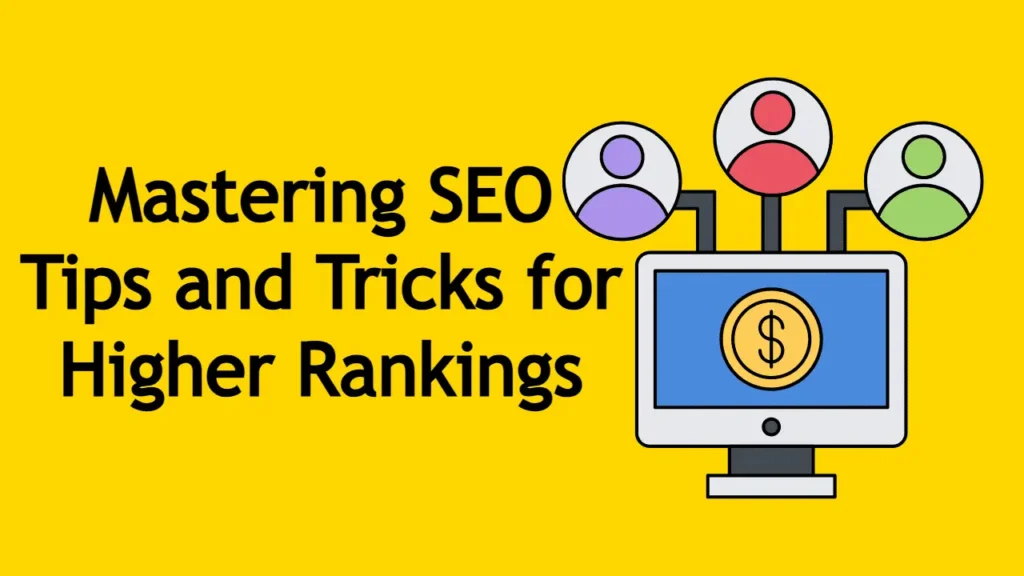
Introduction
Search Engine Optimization (SEO) is the backbone of digital success. Whether you’re running a blog, an eCommerce store, or a business website, mastering SEO can significantly boost your online visibility. In this guide, we’ll explore actionable tips and tricks to help you climb the search engine rankings and drive organic traffic.
1. Keyword Research: The Foundation of SEO
Finding High-Intent Keywords
- Use tools like Google Keyword Planner, Ahrefs, and SEMrush to identify high-traffic keywords.
- Focus on long-tail keywords with lower competition but high conversion potential.
Keyword Placement Best Practices
- Incorporate keywords naturally into titles, meta descriptions, and headings.
- Use keywords in the first 100 words of your content.
- Avoid keyword stuffing to maintain readability and avoid penalties.
2. On-Page Optimization for Maximum Impact
Crafting SEO-Friendly Titles and Meta Descriptions
- Keep titles under 60 characters and include the primary keyword.
- Write compelling meta descriptions (150-160 characters) that encourage clicks.
Using Header Tags for Structure and Readability
- Utilize H1 for the main title and H2/H3 for subheadings.
- Include relevant keywords in subheadings to improve searchability.
3. Creating High-Quality, Engaging Content
The Power of Long-Form Content
- Articles with 1,500+ words tend to rank higher.
- Provide in-depth insights, backed by data and expert opinions.
Enhancing Content with Multimedia
- Use images, videos, and infographics to improve user experience.
- Optimize media files with alt text and proper file naming.
4. Technical SEO: Optimizing Website Performance
Improving Page Speed
- Compress images and leverage browser caching.
- Use a Content Delivery Network (CDN) to speed up load times.
Mobile-First Optimization
- Ensure your website is fully responsive.
- Use Google’s Mobile-Friendly Test to check compatibility.
5. Link Building Strategies for Authority and Trust
Earning High-Quality Backlinks
- Reach out for guest posting opportunities on authority sites.
- Create shareable content like case studies and original research.
Internal Linking for SEO Boost
- Link to relevant internal pages to improve navigation and SEO.
- Use descriptive anchor texts instead of generic phrases like “click here.”
6. Local SEO for Geo-Targeted Traffic
Optimizing Google My Business
- Complete your GMB profile with accurate information and keywords.
- Encourage customer reviews to enhance local credibility.
Building Local Citations
- List your business in local directories such as Yelp, TripAdvisor, and Yellow Pages.
- Ensure NAP (Name, Address, Phone Number) consistency across all platforms.
7. Leveraging Social Signals for SEO
Social Media’s Role in SEO
- Share your content on social media platforms to boost visibility.
- Encourage social sharing with easy-to-use buttons and engaging posts.
Influencer Marketing for SEO Gains
- Collaborate with industry influencers to gain backlinks and exposure.
- Leverage guest appearances on popular podcasts and YouTube channels.
8. Analyzing and Refining SEO Strategies
Tracking SEO Performance with Analytics
- Use Google Analytics and Google Search Console to monitor traffic and rankings.
- Identify pages with high bounce rates and optimize them for better engagement.
A/B Testing for Continuous Improvement
- Experiment with different title tags, meta descriptions, and content formats.
- Monitor the impact of changes and refine strategies accordingly.
Conclusion
Mastering SEO is a continuous process that requires adapting to evolving algorithms and user behavior. By implementing these expert tips and tricks, you can achieve higher rankings, drive more organic traffic, and establish your online presence. Start optimizing today and watch your website climb the SERPs!



